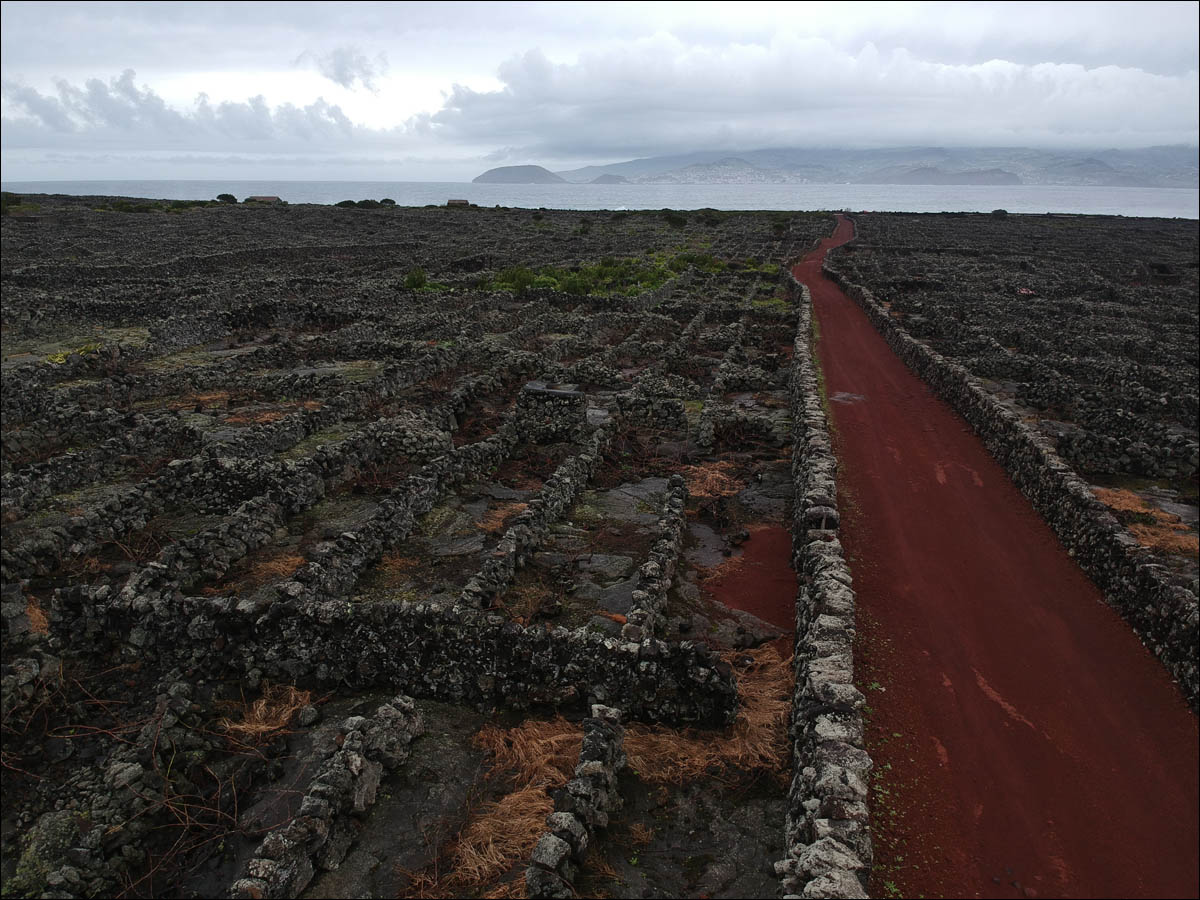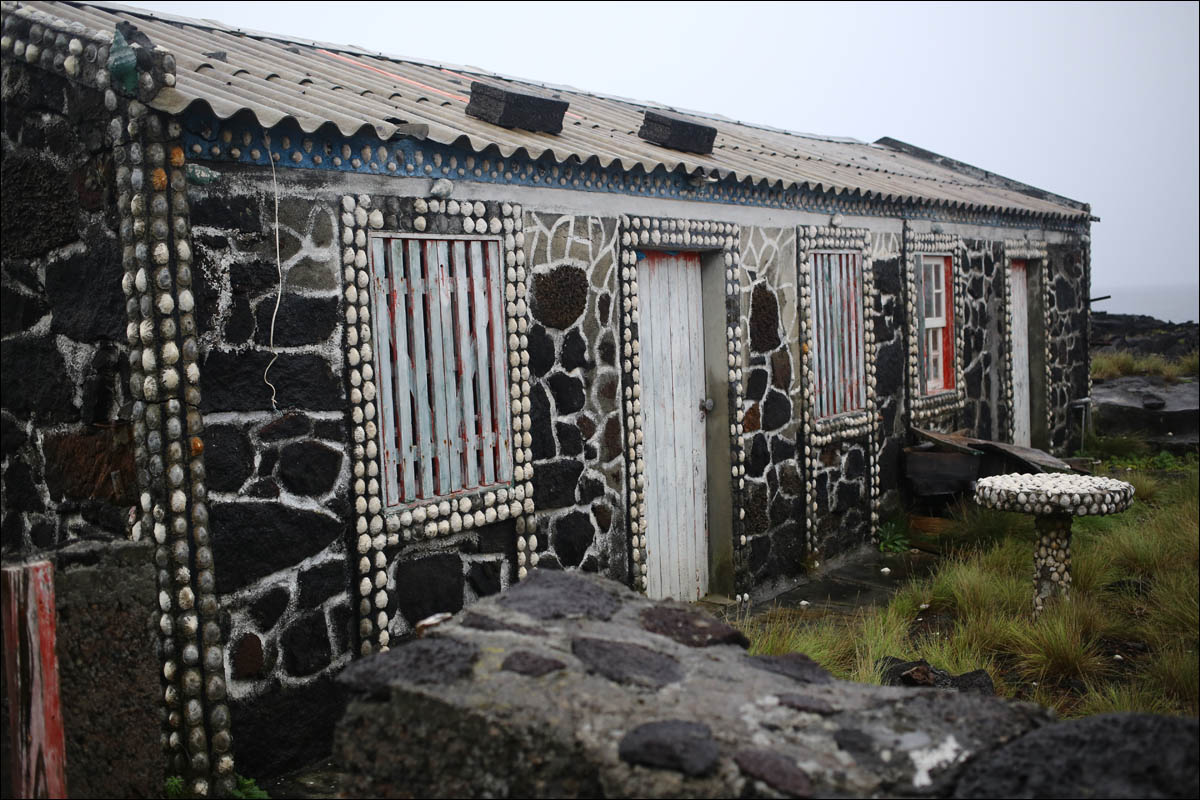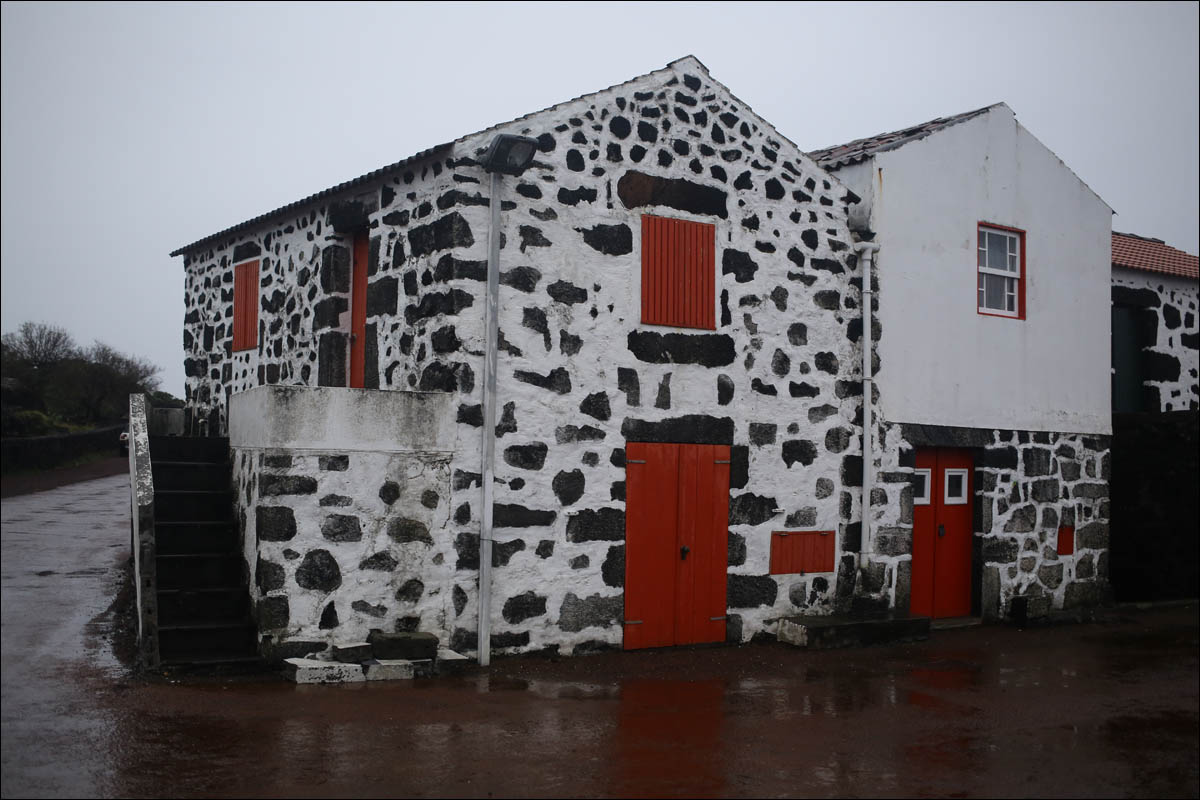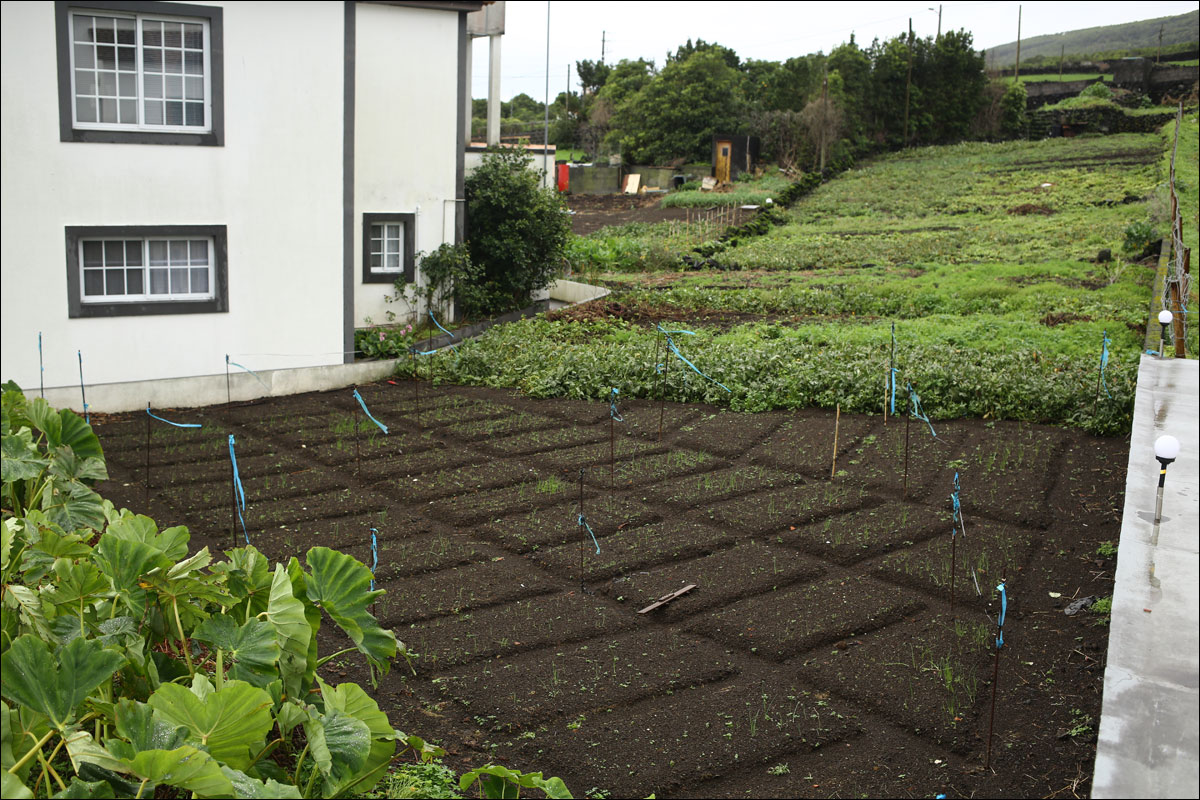Pico Island: like a cozy Tussent made from basalt hell

Mount Pico was formed very long before the arrival of the colonists, even when the geological plate on the Azores broke. Everest height is 8848 meters. A pick - 8449 meters. Of which 2351 meters fall on the surface part, and the rest is a mountain under water. That is, people already live on a slope somewhere in the area of the top.
Imagine you are a Portuguese colonist. You got a completely awesome island, consisting almost entirely of basalt. And quite a bit - from the soil. Wherever you go, everywhere the atmosphere resembles the Inferno castle of the Heroes. If you just stand on the shore, soon the teeth will begin to creak from the basalt and tuff chips. Because the island was formed only 60-70 thousand years ago.
Do you think you need to go off in horror and build on another island? But hell there, you are not just a colonist, but a very specific man who lost friends, a boat and, in general, miraculously swam out to this hospitable shore.
Then you live here for a year and manage to build a house of fossilized lava. Plant some plants (on the ground that you have cleared from the lava) and make yourself a new boat. But not from lava, but from wood.
And then you suddenly realize what a cool place it is. And then an unknown captain sailed to the party, looked around, and decided that since you survived , the rest will survive. And so the first settlement appeared.

The house of the first colonist (with a high probability, there are no documents left) Do

you see a small peak? That's why they call it “peak at peak at peak”.
So, remembering the island’s structure is very simple. There is a shore, the further you go from it to the center, the higher it becomes. First, gentle slopes, then begins a large plateau, and then in general a mountain. And on the highest mountains of Pico there is another little hill. And the whole island is called Pico after this mountain. Mountain Because in the archipelago from the island of Blooming, Pretty Woman, the Third, Green and Wooded (approximate translations), initially the name "Black Island" looked somehow not very attractive to future colonists. Before the PR moves of the Vikings with Greenland, the Portuguese were far away, so they called it simply “Mountain”.
Accordingly, there are three belts on the flora: evergreen forest with ferns, beech and all kinds of invasive, then juniper (which is first a tree, and then a bush from lack of pressure), and then just heather with mosses in the range. And there are many, many sulphates due to volcanic activity in the soil, and sulphates, as we know, are excellent fertilizers.

Here grow “Birds of Paradise” (family Strelitziaceae) originally from South Africa. In Africa, in constant sunshine and heat they, yes, look a little better, but keep in mind that this was filmed in January.
So, the Portuguese came up with this scheme:
- Like the rest of the archipelago - we pick lava on a plateau (where it is higher and colder) and begin to feed the cows there. Why higher - because see point 2.
- And lower, where it is warm, you can start planting grapes! More fig trees, but most importantly - grapes.
In general, valiant farmers take stones (and there they are VERY dofig in the ground, this is a frozen lava) and begin to make walls of them. This is an extremely important example, because it allows you to achieve several effects at once:
- Protect the vineyards from the wind
- Protect the vineyards from animals
- Since the stone is black - to ensure the proper heating of the earth, which affects the quality and taste of wine.
- Well, at the same time lay down somewhere all that managed to dig out of the ground.

That's how it looks.

But the view is higher. These are vineyards. In the areas on the left you can see what happens in 20 years of devastation after the last earthquake. Specifically grow weeds - trees. The remaining vineyards are gradually cleared.
They also build houses from lava. More precisely, the lava stones, which are formed in dense rows. Inside, everything is made of wood. Taking into account that the weather is + 20-25 in the summer and +15 in the winter - everything is fine, only frequent rains interfere.




Notice that the doors have historically been painted with “dragon blood” in red, but now dracaena dracaena juice (Dracaena draco from the Canary Islands) has become rare.

Grove protects the coastline

of lava tiles (shot on another island, where I was able to get to it from above)

Historical shoes for moving around the island, so that the feet are not washed
The hardest of all to make the soil from the lava. The soil was badly lacking. But! After 8 kilometers of the strait there is a beautiful green island of Faial, covered with beech forests. And the Portuguese neighbors live there. And now our colonists begin to travel up to Faial, pick up fertile soil there and lay it in small squares of lava walls. So as not to wash away and carry away the wind.


Higher up the mountain, another microclimate
And, damn it, it starts to work!
The following primteks are rainwater collection pools.

Then - the mill. They are alive and still, but not much used - now there are much more efficient electrical devices. But once windmills were common, and merrily twisted during the harvest season.


Then - selection and invasive white flowers “flor de mirra”. To make the bees from them quite local honey.
Wine enters the best houses in Europe (partly thanks to the Russian kings).

Honey wins a gold medal.
Chestnut delivered. He is here quite seriously eaten. By the way, it was delivered, it seems, because it is very good for wine cellars. The chestnut roots go very close to the surface of the earth - this is a minus when you need to survive drought (but there is simply no drought in the Azores) and a plus when below you a cozy, cool cellar with barrels of ripening wine.

Chestnut soup
Then cows and sheep begin to produce one of the best cheeses in Portugal.

Old milking machine.

Semicircular walls - to protect trees from wind.

Before the Internet and even cell phones there was a short era of walkie-talkies, and it was almost the same window into the world.
Modern island
All this stopped in 1957 and resumed just now. Now residents of Pico bought a tractor for vineyards, there are many places where there are tracks for a tractor (there used to be square to square). In one place they are already experimenting with a vertical planting of the vine in order to make it easier to collect. Progress is relentless.

In September 1957, a volcano began to erupt quite sadly in nearby Fajle. Sadly, because it happens that volcanoes erupt fun and with special effects, and then just as quickly cease to do it. But then everything went according to a long scenario - 13 months this figovina smoked and threw lava. Plus, the earth shook a little more than usual. As a result, a wave of immigration to different countries such as the USA started at Faial (they introduced a special program for facilitating visas for victims), and a part of the people fell from Pick too. In general, many then felled, in particular, because before the appearance of fiber in the houses here, it was one more bearish angle.

Here is so mined stone (lava)
If the vineyards are not engaged, then trees grow there. So on Peak trees grew in many squares. They must be uprooted, then the walls must be restored, then the grapes planted, so that everything can work again. This is exactly what the local people began to do when the entire region was declared World Heritage by UNESCO (Uneshko, as they say here), and they also started giving money to those who support everything in order.

Vegetable garden in the middle of the island. The leaves in the foreground are boiled for three hours to cook.
Now Pico is an independent island. For example, there is no full-fledged hospital, but there is a medical center (resembling our first-aid stations in the north). That is, if you suddenly have to give birth - it is better to find out about this “suddenly” in two weeks and arrive at the hospital of the neighboring island Faial.
Many work at Fajala and vice versa - several times a day steam travels between the islands, which creeps 8 kilometers in 20-30 minutes.

This ferry. A long time ago, lava flowed out into the sea and made a bridge to Faial, connecting the two islands. But then this bridge drowned.
On the island there are as many as two stages and 14 musical groups. That is, just imagine how much they care about them and how rich cultural life there is, what the local people already know exactly how many groups there are on the island.
They also sometimes play concerts in caves formed by lava (lava tubes) off the coast. They say the sound is magical. Build a hockey rink.

In the long rainy evenings weave wine suits

Some streets cannot be expanded. This is a fire-hazardous place, the width is too small to cut off the spread of fire.
Chunks sometimes fall out of the houses, because from time to time the island still shakes. Not much, but regularly. Locals silently shove them back and continue to live. Or put on the roof, because the roof, too, can carry.

Roads, by the way, are also made of lava. At first, it will work out, but today it’s straight from a sponge-stone, which lets the water flow down a lot, and even in the heaviest rain the road is dry. Not the fact that it is smooth, but you can go.

About Madalena
True, they say, there is no special need to repair them entirely:
- If we repair too well, then everything can be washed off or broken. Therefore, next year these pits will be removed. Just new will appear.
This spirit of razdolbaystva "works - do not touch, crutches - a good repair option" here almost everywhere. Because another earthquake can happen, and it will break it to hell. Therefore, here all things are philosophical.

In trifles, for example,
But relatively recently, the breakwater washed away:

Windmills provide 20% of the island’s energy, the rest is burning fuel. We tried to make generators from the energy of the waves, but, as you can guess, the prototype was washed away:

And they also have quite strong waves here. In one of the villages, everyone in the physical education class will all wash together, then schoolchildren are late for school, because they were washed away on the way - in general, in order not to produce excuses, they took and moved some of the buildings higher.
But, surprisingly, when we were driving along another broken-down road, the fixer driver began to apologize wildly. Actually, not at all, she is not so killed. I told him:
- Miguel, in my hometown almost all roads are so calm down.
He looked at me thoughtfully and diagnosed:
“You are crazy.”

"Our Pick picked up a funny hat for himself"
In general, everything on the island is made of lava. Even the beaches. There is a local saying: "We have turned lava into bread and wine." And they are damn right.

There are many cozy gardens here: they are often owned by those who bought a small house here, restored it and uses it as a place to work remotely.

There are many holes in lava, plus there are no predators on Azores (except for cats, but there is a tax on them, and there are few of them), and therefore there are a lot of birds on the island and there are also those who rest here during flights to warm lands .
All this is all about the Azores. But two other posts about them. Pico differs from the rest of the archipelago in that it is fresh, only grew (60-70 thousand years ago) and is completely different. Perhaps this is one of the most interesting young islands in the world.
And here is a post about another volcanic island.
